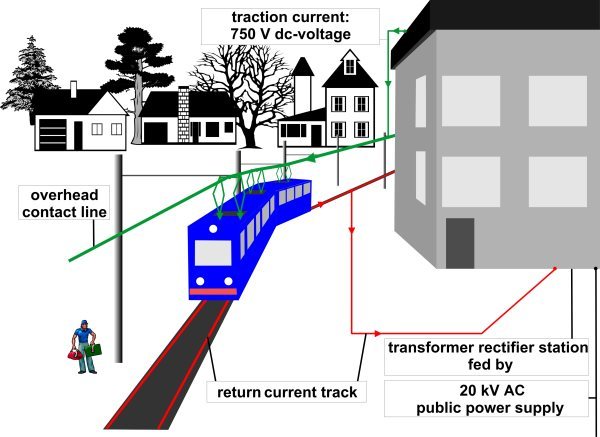Public rail passenger transportation systems
The public rail passenger transportation (tram, subway, city railway) is mainly run by direct current, in contrast to trains that are driven by alternating currents with a frequency of 16.7 Hz (Traction power system 16.7 Hz). The supply of the public rail passenger transportation system is normally performed by 750 V DC voltage. An electric field is established between the trolley wire and the rails.
The power supply of the public rail passenger transportation system is done via rectifiers supplied by the normal 50 Hz three-phase supply system. The rectifier stations are located every 500 - 2000 m near the transportation route. Here, the supply voltage of 20 - 30 kV is stepped-down and rectified to the required DC voltage. The electrical power supply is performed with the aid of trolley wires or with rails, in the case of trams. The current strength can reach 4 kA.

Due to the low intensity trolley wire voltage the electric field strengths near the transportation route don’t exceed 50 V/m. In the interior of the trams or subways the electric field strength is almost completely shielded. However, magnetic flux densities can reach levels from 150 µT - 350 µT. Approximately 1 m away from the platform there are levels of only 50 µT - 110 µT. Typical measurement values for public rail passenger transportation systems (e.g. trams) can be found in the database of exposure sources.